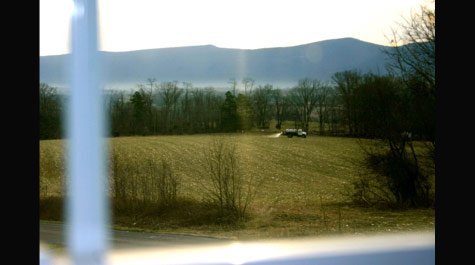Art, science show examines Virginia’s factory farms
A new exhibition by primarily William & Mary students and staff will open Friday exploring the environmental impacts of Virginia’s factory farms.
“CAFO Culture: Visualizing Factory Farming in Virginia” will open with a 5 p.m. reception at 1781 Jamestown Rd., in Jamestown Center at the corner of Sandy Bay and Jamestown roads. The show, free and open to the public, will be available noon to 6 p.m. Tuesdays through Sundays, and closes on Friday, Oct. 30.
CAFO refers to concentrated animal feeding operations, large scale factory farms in which great numbers of dairy cows, turkeys or chickens are confined and fed a diet that isn’t produced onsite, according to the Environmental Protection Agency.
Because water and air pollution is usually invisible without scientific analysis, partnerships between artists and scientists can help people understand the severity of problems associated with factory farming, said Alan C. Braddock, Ralph H. Wark Associate Professor of Art History and American Studies.
The show sets out to do just that, mixing scientific and mapping information with art. At the opening, students will do two pieces of performance art, as well. The show also grapples with the politics of “ag gag” laws that have been enacted in other states criminalizing the observation of factory farms, Braddock said.
“In a way, by mobilizing the resources of the academy, a liberal arts institution like William & Mary, we can have a reasoned and informative discussion about these things,” Braddock said. “Artists and scientists can collaborate in making visible these facilities that are trying hard to be invisible.
“A lot of people don’t like when art gets political and expressive like that, but I’m not one of those people,” he continued. “I think that art has always been a part of the world. Some of the greatest art in history has taken a stand on important issues.”
The exhibition will feature works by W&M undergraduate students Raegan Bostic ’15, Ada Hao ’16, Katelyn Lindsey ’15, Brooke Stewart ’16 and Rachel Merriman-Goldring ’17 with Eva Colberg ’16. One graduate student in American studies, Lindsay Garcia, Ph.D.’19, is also exhibiting, as is one W&M staff member, Tim Russell, Keck Lab GIS adjunct and research assistant. Two Virginia artists not associated with W&M, J.D. Fowler and Sarah Kohrs, are also showing work in the show.
The show is part of a larger interdisciplinary project, “Mapping Virginia CAFOs,” by Braddock, Russell and Virginia Institute of Marine Science Associate Professor Bongkeun Song examining how different disciplines can use visual representation to educate the public about factory farming, Braddock said. The project is funded by a $10,000 grant from the Commonwealth Center for Energy and the Environment.
That project offered a colloquium earlier in the semester and will offer an “artist and activist” talk at 7 p.m. on Thursday, Oct. 15 in the Tucker Theater. That talk will feature international artist Sue Coe on the role art plays in raising awareness of the conditions of farmed animals and Karen Davis, founder and president of United Poultry Concerns, concerned with the treatment of domestic fowl.
Later this month, Rory Maguire and Kang Xia, both associate professors of crop and soil environmental sciences at Virginia Tech, will talk at 7 p.m. on Thursday, Oct. 29.
A related art exhibition will show at the Jamestown Center gallery space alongside “CAFO Culture.” Garcia has curated, “109 Years Since The Jungle,” referring to the novel by Upton Sinclair that characterized the Chicago meatpacking industry and sparked federal food safety regulations.

















